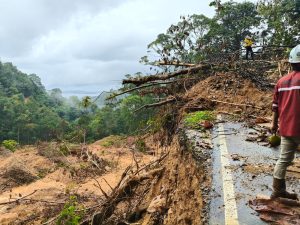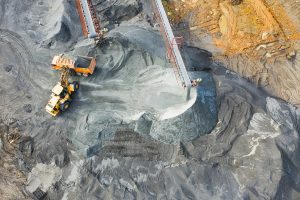Jakarta – The Indonesian government is relying on the use of Carbon Capture and Storage (CCS) and Carbon Capture Utilisation and Storage (CCUS) technologies as part of its grand strategy towards Net-Zero Emission (NZE) by 2060. The strategy has drawn criticisms, including concerns that the project will actually suppress the rate of transition to cleaner and more sustainable renewable energy (NRE).
Secretary General of the Ministry of Energy and Mineral Resources (MEMR) Dadan Kusdiana, Tuesday, July 22, said that the CCS/CCUS programme is a transitional solution for the energy sector that has not been able to completely abandon fossil fuels.
“Not all fossil fuels can be abandoned in a short time. CCS is a transition bridge, answering the need for decarbonisation while maintaining energy supply,” said Dadan in a national webinar titled Measuring the Business Potential of CCS/CCUS in Indonesia.
According to him, this approach is realistic, especially for industries and power plants that are still dependent on fossil energy. Dadan emphasised that the government has prepared a regulatory framework for CCS/CCUS projects to flourish.
Indonesia has established cross-border cooperation with Singapore since October 2022, including in the preparation of a legal framework and technical studies on the economics of carbon storage between countries. “This is not just an effort to mitigate emissions, but also an economic opportunity. The government wants to ensure that risks, economics, and regulations are all balanced,” he continued.
However, behind this optimism, upstream oil and gas industry players highlight the big challenges that overshadow the development of CCS/CCUS, especially regarding investment. Firera, Vice President of Business Support and Lead Carbon Management at SKK Migas, said that the programme cannot be separated from technical and non-technical issues such as high costs, inadequate infrastructure, and public acceptance.
Firera said that although complex and expensive, CCS/CCUS could become a new source of revenue for the oil and gas industry if taken seriously. “CCS should not only be seen as a burden, but as a new revenue engine that also reduces emissions,” he said.
Industry ready, but still waiting for incentives
Pertamina Hulu Energi (PHE) Director of Portfolio Strategy and Strategic Planning, Edi Karyanto, said that PHE has prepared 12 CCS/CCUS projects with a total carbon storage capacity of 7.3 gigatonnes. He emphasised that CCS is part of the decarbonisation strategy as well as a long-term investment.
However, Edi also highlighted the complexity of the CCS business scheme. According to him, fiscal incentives such as tax deductions, royalties, and acceleration of environmental permits are needed for these projects to run optimally. “We need support to make this a sustainable business model,” he said.
On the other hand, various energy and environmental organisations have warned against CCS/CCUS projects taking the focus away from renewable energy development. Some analysts believe that strengthening CCS could reinforce the dominance of fossil fuels and slow investment in clean energy sectors such as solar, wind and bioenergy.
With major challenges in terms of cost, regulation and public perception, the CCS/CCUS strategy is promising in the long run. However, without parallel strengthening of the renewable energy sector, the road to NZE 2060 may not be as smooth as planned. (Hartatik)
Banner photo: chayanuphol/shutterstock.com














